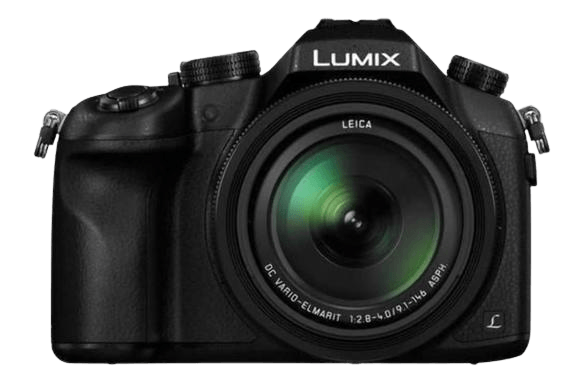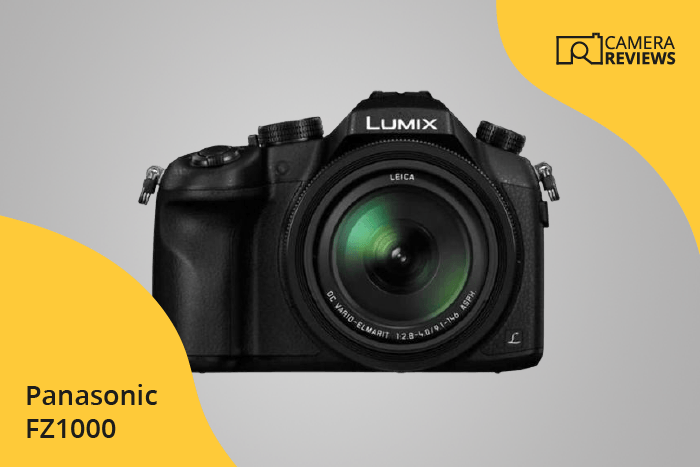Panasonic Lumix DMC-FZ1000 Specs and Scores

The Panasonic Lumix DMC-FZ1000 scores a 57/100 in our camera review. Announced on June 21, 2014, this bridge camera entered the market with a launch price of $899. Measuring 137 x 99 x 131mm and weighing 831g (1.83lbs), the Lumix DMC-FZ1000 is a solid choice for photography enthusiasts. Despite being a few years old, the camera’s specifications still hold up well in today’s market, offering a good balance of performance and value.
Panasonic Lumix DMC-FZ1000 Overview and Optics
The Panasonic Lumix DMC-FZ1000 receives an optics score of 61/100. With 20 megapixels, a shooting speed of 12 frames per second, and a CMOS sensor, this camera offers decent specifications in today’s market. The Venus Engine processor and a DXOMARK score of 64 for the sensor further enhance its performance.
The FZ1000 features a 1″ sensor size and a fixed lens mount, meaning the lens cannot be changed. However, the camera includes image stabilization, ensuring steady shots and reducing the need for multiple lenses. The aspect ratio is 3:2, providing a good balance between width and height in images.
Considering these specifications, the Panasonic Lumix DMC-FZ1000 offers solid optics performance and is a suitable option for those looking for a camera with a fixed lens and image stabilization.
Panasonic Lumix DMC-FZ1000 Video Performance
The Panasonic Lumix DMC-FZ1000 receives a video score of 83/100, showcasing its strong performance in this category. The camera offers 4K video resolution, providing sharp and detailed footage with dimensions of 3840 x 2160 pixels. Furthermore, it supports a maximum video frame rate of 60fps, ensuring smooth video playback. Additionally, the built-in time-lapse functionality enhances its video capabilities.
In the competitive camera market, the FZ1000’s video features stand up well against other options. The 4K resolution and 60fps frame rate are on par with many modern cameras, making it a solid choice for users seeking high-quality video recording. The time-lapse functionality adds versatility to the camera, allowing for creative video projects. The video capabilities of the Panasonic Lumix DMC-FZ1000 make it a reliable and worthwhile option for those looking to capture stunning video footage.
Panasonic Lumix DMC-FZ1000 Features and Benefits
The Panasonic Lumix DMC-FZ1000 receives a feature score of 58/100. The camera has a screen size of 3 inches and a resolution of 2,359,000 dots, providing a clear and detailed view of captured images. However, the lack of a touchscreen may be a drawback for some users. The inclusion of a flip screen is a beneficial feature, making it easier to capture photos and videos from various angles.
While the camera does not have GPS functionality, it does offer both Wi-Fi and Bluetooth connectivity, allowing for easy sharing and transfer of images. In comparison to other cameras in today’s market, the FZ1000 offers a decent set of features, although it may not stand out significantly against its competitors.
Considering the feature set, the Panasonic Lumix DMC-FZ1000 is a reliable camera with useful features, but its lack of a touchscreen and GPS may be limiting factors for some users.
Panasonic Lumix DMC-FZ1000 Storage and Battery
The Panasonic Lumix DMC-FZ1000 receives a storage and battery score of 21/100. This camera has one memory card slot that accepts SD, SDHC, and SDXC cards. In the current market, this is considered standard for most cameras.
The battery life of the DMC-FZ1000 allows for 360 shots, which is less than many competitors. The camera uses a DMW-BLC12PP battery type, and it does not have USB charging capabilities. This means that users must rely on a separate charger for the battery, which can be inconvenient compared to cameras with USB charging.
Considering the storage and battery specifications, the Panasonic Lumix DMC-FZ1000 may not be the top choice for those seeking extended battery life and convenient charging options.
Panasonic Lumix DMC-FZ1000 Alternatives
Do you want to know how the Panasonic Lumix DMC-FZ1000 compares to its competitors? Have a look at the most popular comparisons for this camera below:
- Panasonic Lumix DMC-FZ1000 vs Sony Cyber-shot DSC-RX10
- Fujifilm X-T2 vs Panasonic Lumix DMC-FZ1000
- Panasonic Lumix DMC-FZ1000 vs Lumix FZ300 / FZ330
- Canon EOS R7 vs Panasonic Lumix DMC-FZ1000
- Fujifilm X100V vs Panasonic Lumix DMC-FZ1000
- Nikon Coolpix P1000 vs Panasonic Lumix DMC-FZ1000
Panasonic Lumix DMC-FZ1000 FAQ
Does the Panasonic Lumix DMC-FZ1000 Have Built-in Image Stabilization?
Yes, the Panasonic Lumix DMC-FZ1000 features built-in image stabilization, which helps reduce camera shake and produce sharper images, especially in low light conditions or when using longer focal lengths.
Does the Panasonic Lumix DMC-FZ1000 Support 4K Video Recording?
Yes, the Panasonic Lumix DMC-FZ1000 supports 4K video recording at 30 frames per second, providing high-resolution and smooth footage for various video applications.
What Size Sensor Does The Panasonic Lumix DMC-FZ1000 Have?
The Panasonic Lumix DMC-FZ1000 is equipped with a 1-inch sensor, which offers improved image quality and low light performance compared to smaller sensor cameras.
Does the Panasonic Lumix DMC-FZ1000 Have a Dual Memory Card Slot?
No, the Panasonic Lumix DMC-FZ1000 has a single memory card slot, which supports SD, SDHC, and SDXC cards for storing your images and video files.
Does the Panasonic Lumix DMC-FZ1000 Have a Touch Screen?
No, the Panasonic Lumix DMC-FZ1000 does not have a touch screen. However, it features a fully-articulating 3-inch LCD screen for easy framing and image review.
Does the Panasonic Lumix DMC-FZ1000 Have Wi-Fi and Bluetooth?
Yes, the Panasonic Lumix DMC-FZ1000 is equipped with both Wi-Fi and Bluetooth, allowing for easy wireless connectivity with compatible devices for image transfer and remote camera control.
Does the Panasonic Lumix DMC-FZ1000 Have GPS?
No, the Panasonic Lumix DMC-FZ1000 does not have built-in GPS functionality for geotagging your images.
Is the Panasonic Lumix DMC-FZ1000 Weather Sealed?
No, the Panasonic Lumix DMC-FZ1000 is not weather-sealed, so it is recommended to use caution when shooting in harsh weather conditions or protect the camera accordingly.
Does the Panasonic Lumix DMC-FZ1000 Have a Built-in Flash?
Yes, the Panasonic Lumix DMC-FZ1000 features a built-in flash for additional lighting when needed, as well as a hot shoe for attaching an external flash unit for more advanced lighting options.

